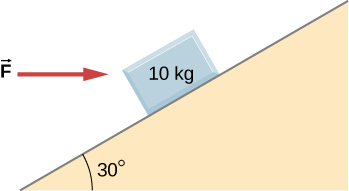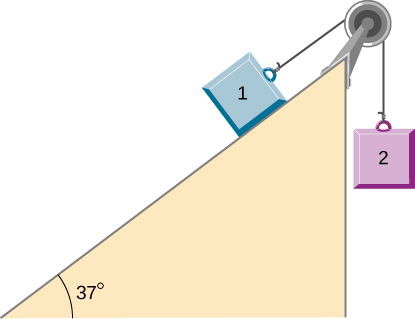| << Chapter < Page | Chapter >> Page > |
If the order of the barges of the preceding exercise is reversed so that the tugboat pulls the barge with a force of what are the acceleration of the barges and the tension in the coupling cable?
An object with mass m moves along the x -axis. Its position at any time is given by where p and q are constants. Find the net force on this object for any time t .
m (6 pt + 2 q )
A helicopter with mass has a position given by Find the net force on the helicopter at
Located at the origin, an electric car of mass m is at rest and in equilibrium. A time dependent force of is applied at time , and its components are and where p , q , and n are constants. Find the position and velocity as functions of time t .
and
A particle of mass m is located at the origin. It is at rest and in equilibrium. A time-dependent force of is applied at time , and its components are and where p , q , and n are constants. Find the position and velocity as functions of time t .
A 2.0-kg object has a velocity of at A constant resultant force of then acts on the object for 3.0 s. What is the magnitude of the object’s velocity at the end of the 3.0-s interval?
9.2 m/s
A 1.5-kg mass has an acceleration of Only two forces act on the mass. If one of the forces is what is the magnitude of the other force?
A box is dropped onto a conveyor belt moving at 3.4 m/s. If the coefficient of friction between the box and the belt is 0.27, how long will it take before the box moves without slipping?
1.3 s
Shown below is a 10.0-kg block being pushed by a horizontal force of magnitude 200.0 N. The coefficient of kinetic friction between the two surfaces is 0.50. Find the acceleration of the block.

As shown below, the mass of block 1 is while the mass of block 2 is The coefficient of friction between and the inclined surface is What is the acceleration of the system?

A student is attempting to move a 30-kg mini-fridge into her dorm room. During a moment of inattention, the mini-fridge slides down a 35 degree incline at constant speed when she applies a force of 25 N acting up and parallel to the incline. What is the coefficient of kinetic friction between the fridge and the surface of the incline?
A crate of mass 100.0 kg rests on a rough surface inclined at an angle of with the horizontal. A massless rope to which a force can be applied parallel to the surface is attached to the crate and leads to the top of the incline. In its present state, the crate is just ready to slip and start to move down the plane. The coefficient of friction is of that for the static case. (a) What is the coefficient of static friction? (b) What is the maximum force that can be applied upward along the plane on the rope and not move the block? (c) With a slightly greater applied force, the block will slide up the plane. Once it begins to move, what is its acceleration and what reduced force is necessary to keep it moving upward at constant speed? (d) If the block is given a slight nudge to get it started down the plane, what will be its acceleration in that direction? (e) Once the block begins to slide downward, what upward force on the rope is required to keep the block from accelerating downward?
a. 0.60; b. 1200 N; c. and 1080 N; d. e. 120 N

Notification Switch
Would you like to follow the 'University physics volume 1' conversation and receive update notifications?